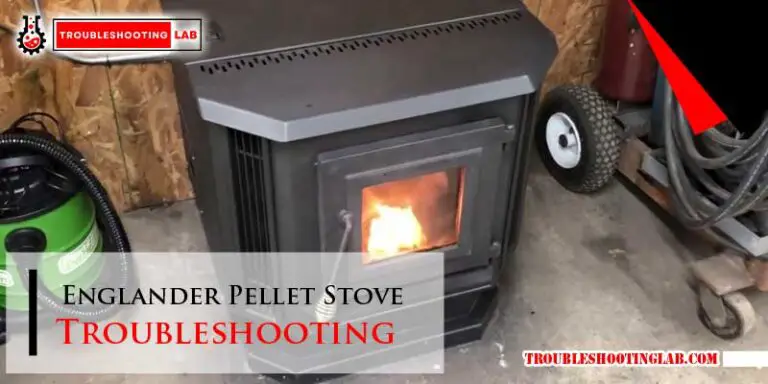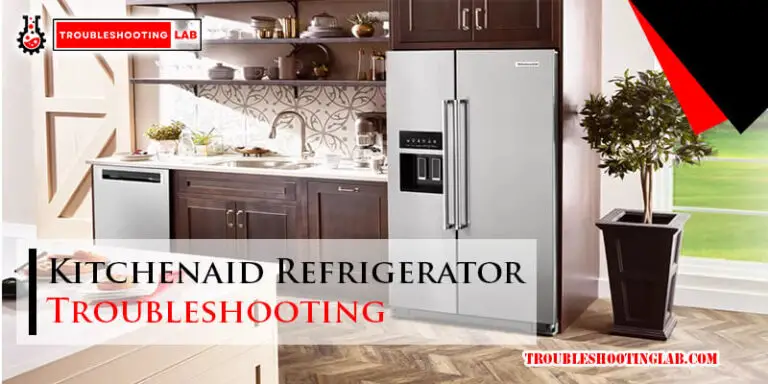Heatilator Pellet Stove Troubleshooting: Expert Tips and Solutions
Heatilator pellet stoves are a popular choice for efficient home heating. But like any appliance, they can have issues.
Do you own a Heatilator pellet stove and face some problems? You’re not alone. Many users experience common issues with these stoves. Understanding these problems can help you fix them quickly. In this guide, we will explore various troubleshooting tips.
These tips will help keep your stove running smoothly. Whether it’s ignition problems, feeding issues, or unusual noises, we’ll cover it all. By the end, you’ll know how to handle common Heatilator pellet stove problems. Get ready to enjoy a warm and cozy home without any hassle. Let’s dive into the solutions!
Common Issues
Heatilator Pellet Stoves are efficient and reliable. But, like any appliance, they can have problems. Understanding these common issues can help keep your stove running smoothly.
Stove Not Starting
If your stove doesn’t start, it could be due to several reasons. First, check the power source. Make sure the stove is plugged in. Also, ensure the circuit breaker is not tripped.
Next, inspect the control board. If it’s faulty, the stove won’t start. The control board might need a reset or replacement.
Additionally, verify the hopper is full. An empty hopper will prevent the stove from starting. Also, the auger might be jammed. Clear any pellets blocking the auger.
Lastly, check the igniter. A faulty igniter won’t light the pellets. You might need to clean or replace the igniter.
Poor Heat Output
Poor heat output is another common issue. Begin by checking the air flow. Ensure the air intake and exhaust are clear. Blocked vents will reduce heat output.
Next, inspect the burn pot. A clogged burn pot will affect heat production. Clean the burn pot regularly to maintain efficiency.
Also, check the pellet quality. Low-quality pellets produce less heat. Use high-quality pellets for better performance.
In addition, examine the fan and blower. A malfunctioning fan will reduce heat distribution. Clean or replace the fan if needed.
Lastly, inspect the gaskets. Worn-out gaskets can cause air leaks. Replace any damaged gaskets to improve heat output.
| Issue | Possible Cause | Solution |
|---|---|---|
| Stove Not Starting | Power Source | Check plug and circuit breaker |
| Stove Not Starting | Control Board | Reset or replace control board |
| Stove Not Starting | Empty Hopper | Fill hopper with pellets |
| Stove Not Starting | Jammed Auger | Clear any blockages |
| Stove Not Starting | Faulty Igniter | Clean or replace igniter |
| Poor Heat Output | Blocked Air Flow | Clear air intake and exhaust |
| Poor Heat Output | Clogged Burn Pot | Clean burn pot |
| Poor Heat Output | Low-Quality Pellets | Use high-quality pellets |
| Poor Heat Output | Malfunctioning Fan | Clean or replace fan |
| Poor Heat Output | Worn-Out Gaskets | Replace damaged gaskets |
Tools Needed
Troubleshooting a Heatilator Pellet Stove can be simple with the right tools. You can solve many common problems at home. Let’s explore the tools you need.
Basic Tools
Basic tools are essential for most troubleshooting tasks. Keep these items handy:
- Screwdriver Set: A set of Phillips and flat-head screwdrivers.
- Wrench Set: Different sizes for various bolts and nuts.
- Multimeter: Check electrical connections and voltage.
- Wire Brush: Clean buildup from stove parts.
- Shop Vacuum: Remove ash and debris from the stove.
Specialized Equipment
Some issues require specialized equipment. These tools are specific to pellet stoves:
- Auger Motor Tester: Check if the auger motor is functioning correctly.
- Combustion Analyzer: Measure the efficiency of the stove’s combustion process.
- Manometer: Test the pressure in the stove’s venting system.
- Thermocouple Tester: Ensure the thermocouple is working properly.
- Digital Scale: Weigh pellets to check the feed rate.
Having these tools will help you troubleshoot your Heatilator Pellet Stove more effectively. Make sure to keep them in a safe, accessible place.
Cleaning Tips
Keeping your Heatilator pellet stove clean is crucial for its efficiency and longevity. Regular cleaning ensures optimal performance and prevents issues. Below are some essential cleaning tips that will help maintain your stove in top condition.
Regular Maintenance
Regular maintenance involves simple daily and weekly tasks. These tasks ensure your stove runs smoothly.
- Daily Cleaning: Remove ash from the burn pot. Use an ash vacuum for best results.
- Weekly Cleaning: Empty the ash drawer. Check the glass door for soot and clean it with a damp cloth.
Regular maintenance prevents buildup, which can cause blockages and reduce efficiency. Consistency is key to keeping your stove in good working order.
Deep Cleaning
Deep cleaning should be done monthly or after burning a ton of pellets. This thorough cleaning targets areas not addressed in regular maintenance.
- Clean Heat Exchanger: Use a soft brush to remove soot and ash. This improves heat transfer.
- Vacuum Internal Compartments: Open the stove’s panels and vacuum the internal parts.
- Inspect and Clean Venting: Remove any obstructions in the venting system. This ensures proper airflow.
Deep cleaning removes stubborn deposits and ensures your stove runs efficiently. Schedule this task to keep your stove in top shape.
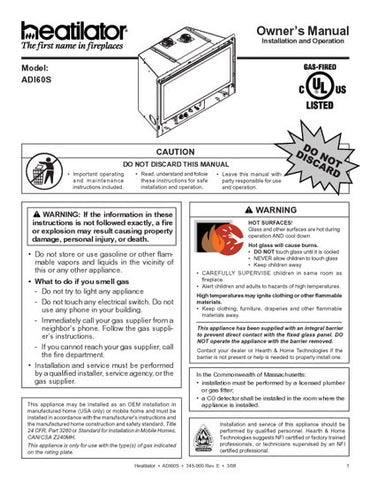
Credit: woodheatstoves.com
Pellet Quality
Ensuring the quality of the pellets used in your Heatilator pellet stove is crucial for optimal performance and longevity. Poor-quality pellets can lead to clogs, inefficient burning, and increased maintenance. Let’s explore some key aspects to consider for maintaining pellet quality.
Choosing The Right Pellets
Not all pellets are created equal. Choosing the right pellets can make a significant difference in the performance of your stove. Here are some tips:
- Hardwood vs Softwood: Both types are suitable, but softwood pellets often burn hotter and cleaner.
- Low Ash Content: Choose pellets with less than 1% ash content to reduce cleaning frequency.
- Certified Pellets: Look for pellets with certification from the Pellet Fuels Institute (PFI) for quality assurance.
Storage Tips
Proper storage of pellets is essential to maintain their quality. Follow these storage tips to ensure your pellets stay dry and efficient:
- Dry Area: Store pellets in a dry place to prevent moisture absorption, which can cause clogs and inefficient burning.
- Elevate Off the Ground: Keep pellets off the ground to avoid contact with damp surfaces.
- Use Airtight Containers: Store pellets in airtight containers or bags to protect them from humidity.
- Monitor for Pests: Check storage areas regularly for signs of pests that may damage the pellets.
By choosing quality pellets and storing them properly, you can enhance the performance and lifespan of your Heatilator pellet stove.
Ventilation Problems
Ventilation problems with Heatilator pellet stoves can cause poor air quality. Regular cleaning and checks can help prevent these issues.
Pellet stoves need good ventilation to work well. Poor ventilation can cause many issues. You may notice smoke inside your home. Or the stove might not heat properly. Let’s dive into common ventilation problems.Blocked Vents
Blocked vents can cause big problems. Dirt, debris, and ash can clog the vents. This stops air from moving freely. Check your vents often. Clean them to keep the air flowing. Use a brush or a vacuum for this task.Improper Installation
Improper installation can also cause ventilation issues. If the vents are not installed correctly, air will not flow well. Make sure the vents are placed in the right spots. Check the manual for proper installation steps. If needed, seek help from a professional. “`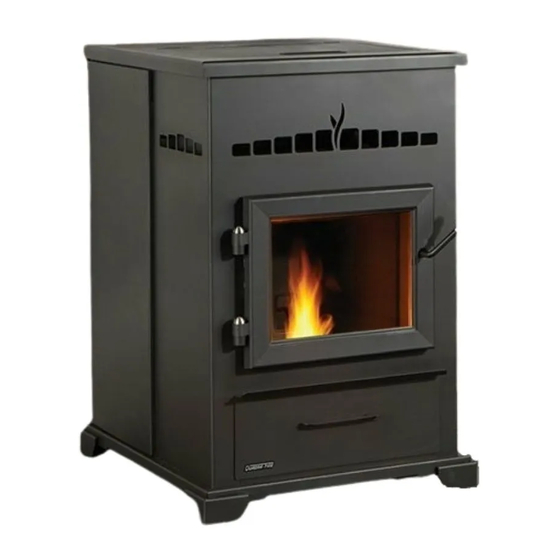
Credit: www.manualslib.com
Ignition Troubles
Ignition troubles can be frustrating for Heatilator pellet stove owners. These issues prevent your stove from starting properly. Understanding the common causes can help you fix them quickly.
Failed Igniters
A failed igniter is a common ignition problem. The igniter is responsible for lighting the pellets. If it fails, the stove will not start. Check the igniter for any visible damage. Sometimes, a simple replacement can solve the problem.
Make sure the igniter is connected properly. Loose connections can prevent it from working. Test the igniter with a multimeter. It should show a low resistance. A high resistance means the igniter is faulty. Replace it if needed.
Electrical Issues
Electrical issues can also cause ignition problems. Check the power supply to the stove. Ensure it is plugged in and the circuit breaker is not tripped. Inspect the wiring for any damage. Damaged wires can interrupt the power flow.
Look at the control board for any signs of a problem. The control board manages the stove’s functions. If it is faulty, the stove may not ignite. Test the control board with a multimeter. Replace it if it shows any faults.
Make sure the stove’s fuse is intact. A blown fuse can stop the stove from starting. Replace any blown fuses with ones of the same rating.
Control Panel Errors
Control panel errors can be frustrating for Heatilator pellet stove owners. These errors often disrupt the stove’s operation. Understanding and troubleshooting these issues is essential. This section will help you navigate through common control panel errors.
Resetting Controls
Sometimes, a simple reset can fix many control panel issues. To reset the controls, turn off the stove. Unplug it from the power source for a few minutes. Plug it back in and turn it on. This process often clears minor glitches. If problems persist, check the user manual for specific reset instructions.
Error Codes
Error codes on the control panel indicate specific problems. Each code corresponds to a different issue. For example, “E1” might indicate a feed system problem. “E2” could signal an ignition issue. Refer to the user manual for a complete list of error codes. Understanding these codes helps in diagnosing the problem quickly.
Once you identify the error code, take the necessary steps to fix it. This could involve cleaning the stove, checking the fuel supply, or contacting a professional. Regular maintenance can prevent many of these errors.
Professional Help
If your Heatilator pellet stove isn’t working right, you might need professional help. Some issues need more than basic troubleshooting. Professional technicians have the skills and tools to fix complex problems.
When To Call A Technician
There are specific signs that indicate it’s time to call a technician:
- Unusual noises: Strange sounds could signal mechanical issues.
- Error codes: Persistent error codes need expert attention.
- Heating issues: If your stove doesn’t heat well, call for help.
- Smoke or soot: Excessive smoke or soot build-up is dangerous.
- Electrical problems: Flickering lights or power issues need professional care.
Finding Reliable Service
Finding a reliable service for your Heatilator pellet stove is essential. Here are some tips to ensure you get the best help:
| Tip | Description |
|---|---|
| Check Reviews | Read online reviews to gauge the service quality. |
| Ask for Referrals | Friends and family can recommend trusted technicians. |
| Verify Credentials | Ensure the technician is licensed and certified. |
| Get Quotes | Compare prices from different services to get a fair deal. |
Investing time in finding the right professional helps your stove run safely and efficiently.
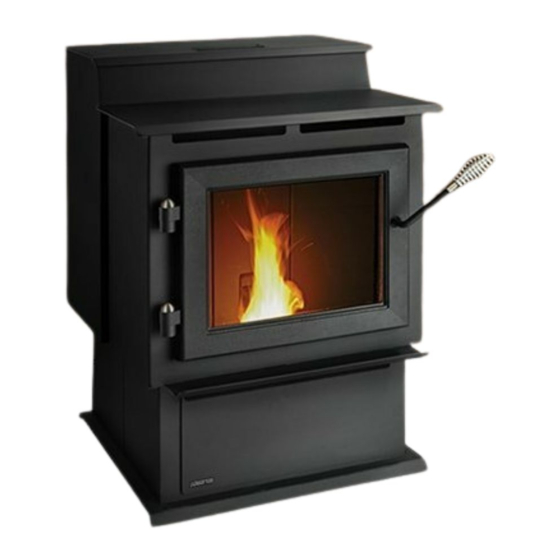
Credit: www.manualslib.com
Frequently Asked Questions
Why Is My Heatilator Pellet Stove Not Igniting?
Your pellet stove may not ignite due to a clogged igniter or a faulty switch. Clean and check these parts.
How Do I Reset My Heatilator Pellet Stove?
To reset, turn off the stove, wait a few minutes, and then turn it on again. It should reset.
Why Does My Heatilator Pellet Stove Keep Shutting Off?
It might shut off due to a clogged hopper or a dirty air filter. Clean both to fix the issue.
What Does A Blinking Light On My Pellet Stove Mean?
A blinking light usually indicates an error. Check the manual for specific error codes and solutions.
How Often Should I Clean My Heatilator Pellet Stove?
Clean your pellet stove every week. Regular maintenance ensures efficient performance and prevents problems.
Conclusion
Maintaining your Heatilator pellet stove ensures it runs efficiently. Regular cleaning helps prevent common problems. Always refer to the user manual for specific troubleshooting tips. If issues persist, seek professional help. Proper care extends the life of your stove. Enjoy a warm and comfortable home with a well-maintained Heatilator pellet stove.
Happy heating!


